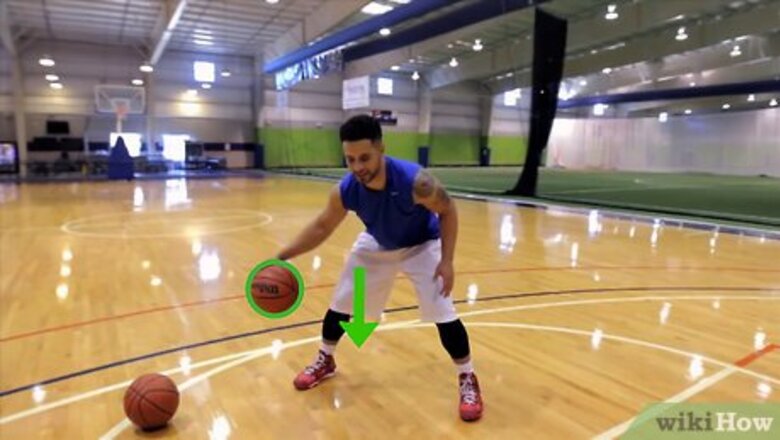
views
How to Do Dribbling Exercises (Basic)
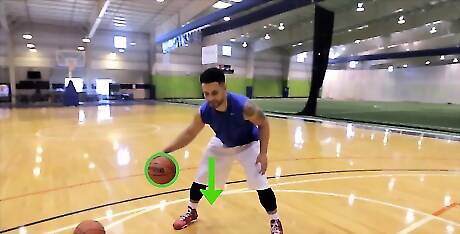
Use correct dribbling posture. Your knees should be shoulder-width and you should be on your feet ready to move around. Don't stand with your knees locked. Always make sure you stay balanced, if you do not stay on balance you could end up tripping yourself over. When you dribble, the ball should be bouncing no higher than your waist. Also when dribbling always move your wrist to keep the ball in good control. In a defensive crouch, the ball should come no higher than your mid-thigh.
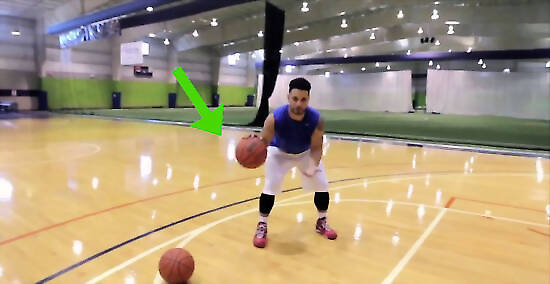
Learn to dribble. Do as much as you can starting out, you'll need to start getting a feel for how the ball moves and responds to the force you put on it. It's also a good idea to exercise with each hand by itself to get comfortable going to the right and to the left. Alternate bouncing it quite hard and quite softly. A good dribbling exercise to start with is to dribble twenty times in a row with your right hand and then switch and dribble twenty times in a row with your left hand. Do three sets of this when you start a basketball routine and three sets of this at the end. Stay still at first, but keep your knees bent and bounce on your toes to stay moving. When you get comfortable dribbling from a stationary position, do this same exercise while walking. When you get comfortable walking, start running.
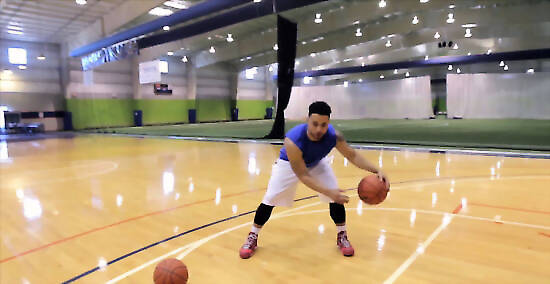
Alternate hands on the move. This is called a crossover. Start dribbling down the court or in your driveway in a zig-zag pattern: go forward and right for two steps and then bounce the ball over to your left hand and go forward and left for two steps. When you get that down, do the same thing backwards. Set up a row of cones fives yards apart in a straight line to dribble around.
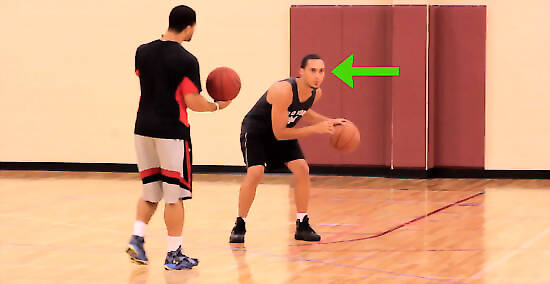
Keep your eyes up. One of the most important skills to learn in the early stages of dribbling is to dribble without looking at the ball. It's hard at first, but eventually you'll need to feel the ball without needing to see it. Pick a point (like the rim of the basketball hoop) to fix your eyes upon as you start dribbling and run through your dribbling exercises.
Dribble constantly. Learn to 'feel' where the ball is at all times, have control over it, and be able to do anything you can with it. The more you practice your fundamentals, the better you'll become. Try not to let the ball touch your palm. A good dribble comes from your fingers. Spend any free down time you have dribbling the basketball. Dribble up and down the court or wherever you're practicing. Dribble a basketball when you walk to school or to your friend's house. It's very important to practice as much as you can.
How to Do Dribbling Exercises (Advanced)
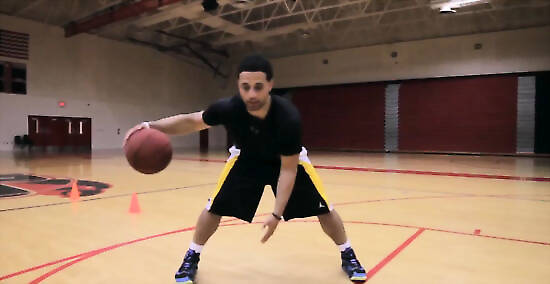
Develop your power dribble. Think of power-dribbling as the "run" in crawl-walk-run. When you're first starting out, your biggest concern is making sure the ball comes back close to your hand, but eventually you need to make sure the ball comes back to your hand as quickly and with as much force and control as possible. It's all in the wrist. To develop your power dribble, alternate bouncing the ball as you normally do and then with a few degrees more power. Don't bounce it so hard you lose control: bounce it firmly several times in a row without letting your arm come way up when you dribble it back down, then alternate back to a casual dribble. Try dribbling in the dirt. You'll have to bounce the ball extra-hard to get it to come back at the same speed you're used to. When you get used to that, move inside and dribble like you've been dribbling before.
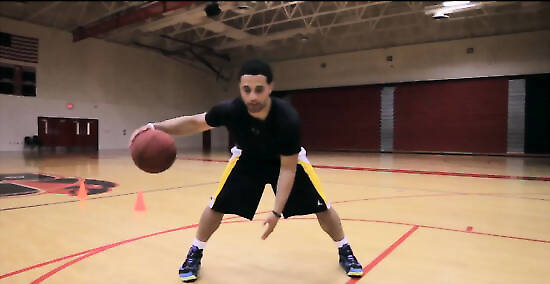
Practice your power crossovers. A crossover is the dribble that alternates the ball between the hands. A quick crossover makes it harder for a defender to steal the ball or force you out of your movement. In the late 90s, Allen Iverson was known for his extremely fast and powerful crossovers. Start by power dribbling four times with your right hand and make the fifth dribble a hard crossover to your left hand. Do the same thing with your left. Then, make it three before the crossover, then two, eventually switching between your hands a few times with your power dribble, then build it back up.
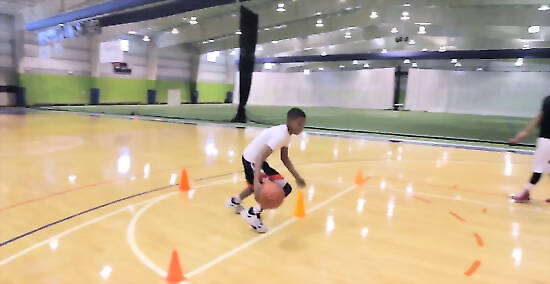
Dribbling sprints. Run suicide sprints on the court while power dribbling. Dribble from the baseline to the free-throw line and back, then dribble to the three-point line and back, then to half-court and back, then the full court. Every time you reach a point, touch the line.
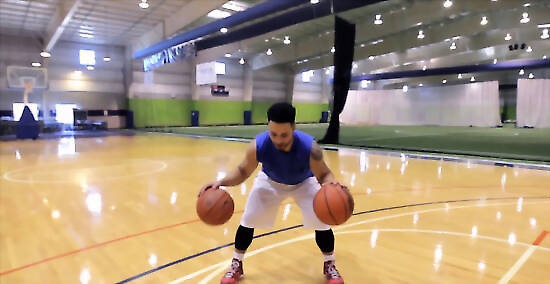
Dribble two balls. When you're getting really confident in your power dribbling, try to dribble two balls simultaneously. This helps ingrain the dribbling and make it subconscious. If you can power-dribble two balls simultaneously all the way down the court, you'll be in great dribbling shape.
How to Do Shooting Exercises (Mechanics)

Remember BEEF+C when shooting. This mnemonic device should help you remember the fundamentals of shooting the basketball: B=Balance. Make sure you are balanced before you shoot. Your feet should be planted at shoulder-width, your knees should be flexed, and you should be ready to jump E=Eyes. Keep your eyes on the basket while you shoot. Imagine there is a dime balancing on the front of the rim and that you're trying to knock it off with your shot. E=Elbow. Keep your shooting-elbow tucked in towards your body when you shoot. F=Follow Through. Make sure you follow through with your shot; your shooting hand should have an arc shape. C=Concentration/Awareness. This is the most important part of shooting. Focus on where the ball is going. Once you've made the decision to shoot, commit to it and focus on making the shot.

Practice shooting "one-handed." The shooting motion is almost entirely in your dominant hand, so practice that way. If you're right handed, the purpose of your left hand is to stabilize the ball as you prepare to shoot. It's only there to make sure the ball doesn't slip out of your right hand. Although you need to make sure you don't use this technique while playing a match; it will most certainly lead to a faulty shot, and has very less chances of actually going in. Use the pads of your fingers and hold the ball so you see light through all of your fingers. As you shoot, push the ball toward your target while rolling it back toward you. This is called "English" or "spin." Practice this while lying down. Shoot your basketball straight into the air so it comes back down onto your hand. You can do this for hours, while listening to music, or when you're having trouble sleeping. The ball should feel like part of your arm, extending into the hoop.

Practice lay-ups from both sides. A lay-up is all about dribbling, mechanics, and approach. Using the proper form, you should make a lay-up every time. Practicing lay-ups especially with your non-writing hand is a great way to make you a more versatile player. Dribble toward the basket from the three-point line at a diagonal. When you get to the lane line, you'll have two more steps to the hoop. If you're on your right, dribble one last dribble when you step on the lane line with your right foot, then plant and jump from with your left. If you're on the left, do the opposite. On your right side, bring your right hand up with the ball in it and your right knee up at the same time. Imagine your elbow was attached to your knee with a string. Lay the ball off the backboard by aiming at the top right corner of the box behind the rim. Don't try to bounce it off with any force--your momentum coming in and up should do most of the work.
How to Do Shooting Exercises (Accuracy)
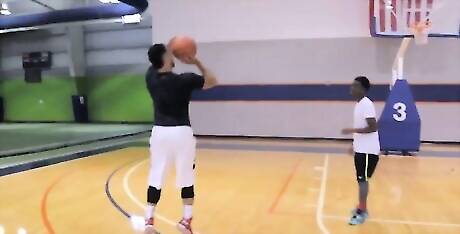
Go around the world. Once you've got the mechanics of your shot down, practice shooting from different parts of the court. For this exercise it helps to have a friend or teammate grab your rebounds and pass the ball back quickly. This drill involves at least 7 positions, but you can tailor it to your needs. You have to make each shot before you move to the next position on the court. Do it as quickly and with as few shots as possible. Start by shooting a lay-up. Run immediately to the baseline at a point in between the lane line and the three-point line. Have your friend pass you the ball and keep shooting from there until you make it. From there, run to a point in between the corner of the lane and the baseline and shoot again. Then move to the corner, then the free-throw line. Keep moving around the lane until you've made your way around. Expand the game to include the same points on the three-point line when you're consistently making shots in the lane.
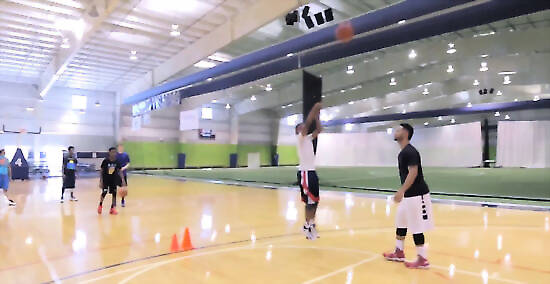
Shoot free-throws until you can do it in your sleep. An undefended shot, free-throws are the purest display of shooting mechanics. You can't let your feet leave the ground, so you've got to perfect your motion and your accuracy. See how many free-throws you can hit in a row. Practice shooting free-throws when you're cold and when you're totally winded. If you can consistently make free-throws while breathing heavily after running lines or doing dribbling drills, you'll be in good shape for a game.
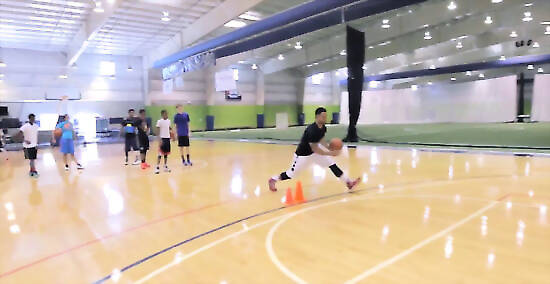
Practice fade-aways, hook-shots, other close-range techniques while being defended. It's never going to be easy to get off a clean shot. If you've been practicing by yourself and making all kinds of shots from all distances, it can be quite a shock to get in the game and hit nothing but bricks. A defender hurries you, gets in your face, and will try to steal or block your shot. A quick turn-around or fade-away shot will require you to over-correct with your arm for going backwards. You'll lose the strength you get from pushing off with your legs.
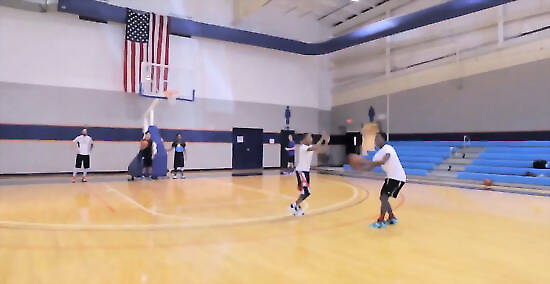
Play "Horse" This playground game is perfect for developing shot proficiency from all corners of the court. When you call your shots, it's tempting to shoot the easy ones, but when you've got someone else picking where you shoot, things can get a lot more interesting.
How to Practice Defense
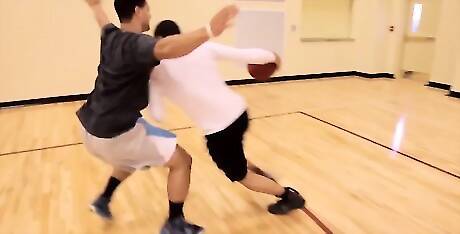
Develop your defensive stance. To be an all-around good basketball player, you'll not only need to be able to make the clutch three-pointer, but to get back on defense and block a shot. The first step in developing your defensive game is in your stance. Keep a wide base with your body weight on the balls of your feet. Keep your butt down and your hips back. Your arms should be always up and out. Don't reach in or touch the offensive player too much or you'll be called for fouls. Use them to distract the player and try to block passes and shots. Focus your eyes on the player's waist and chest, not the ball. This will give you more of an idea where he will try to go. Make sure that you don't focus on the opposing player's stomach or feet. They will beat you to the basket every time if you do so.
Practice your shuffle step. A common basketball practice drill will include shuffle-stepping (moving quickly sideways) down the court and back. Practice switching directions by having a teammate dribble left and right. Move back and forth in the defensive stance while mirroring the movements.
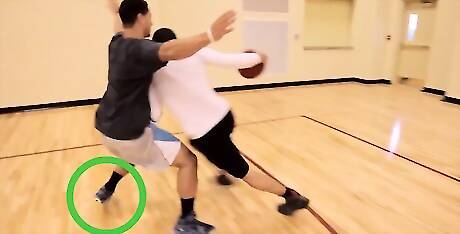
Trap the offensive player with your feet. Push the offensive player toward the sideline by putting your lead foot in between his lane to the hoop. So, if he's coming down the middle, push him to the left by leading with your right foot. You want to close off the access to the lane and to the basket, so trying to push the offensive player toward the side will mess up the offensive plan. Have a teammate dribble down the court from one baseline to the other. Play defense with your hands behind your back, forcing the dribbler to change directions with your feet. You'll need to quickly shuffle step down the court to stay ahead and direct the person with the ball.
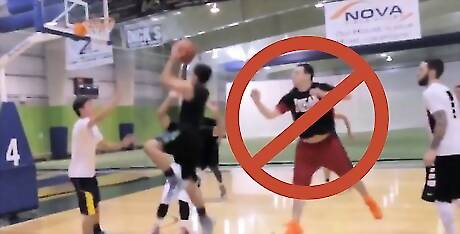
Don't jump. A common mistake players make is jumping too often to try to block a shot. When you're off your feet, you're less useful as a defender. If you think the person you're guarding is going to shoot, raise your hands in the air, but don't jump. Disrupting the view of the basket can be just as effective in making the shot miss as blocking it.

Box Out. When rebounding box out and slip in front of another rebounder to intercept, always box out.
How to Improve Teamwork
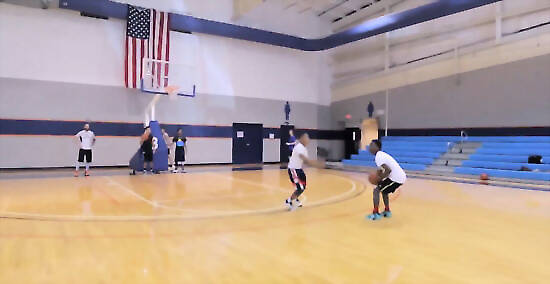
Learn to pass. It may sound obvious, but making crisp and accurate passes can be the difference between a good team and a collection of individual players. Even if you're all talented individually, learning to work well as a unit is necessary for success on the court. Team drills will help your group become efficient passers: Simulate a fast break. In a group of five, move all the way down the court without dribbling the ball, letting the ball touch the floor, or moving your feet when the ball is in your hands. Play hot potato. Having someone control some music playing in the background and pause it suddenly. Whoever is holding the ball when the music stops is out. You should be passing quickly and crisply, without dribbling. As you as you get the ball, look for someone to pass it to.

Learn the role of your position. If you play for a team, you'll have a particular role that's yours to play. While it may be fun to drop back for a three-pointer every time your hand touches the ball, it's typically not the job of the center to do that. Talk to your teammates and your coach to find out where you need to be on particular plays. The point guard is the court general. At this position, you need to see the court and set up the offense. You need to be a selfless passer and good shooter. You also need to have a good handle of the ball and court vision. The shooting guard is the back-up to the point guard. Usually, this is the best shooter or offensive player on the team. The small forward is the most versatile. You need to be a good shooter with the ability to go up for rebounds on offense or defense, and good vision to be able to kick the ball back out to the guards to set up the offense again. The power forward is a good defensive player, shot blocker, and an excellent player in the lane. This is maybe the most physical player on the team. The center is (among other things) probably the tallest player on the team. You should also be an excellent rebounder and passer, with the ability to control the lane game on offense. Use other players for inspiration. When you watch an NBA or college game, specifically watch the players who play the same position you do. Where is the power forward while the shooting guard takes a three-point shot? What does the guard do while the center goes up for a rebound on offense?

Learn to set clean picks or screens. A pick is set when you're on offense and block a defensive player with your body to allow your teammate a clear lane with the ball. You need to have your feet set cleanly and be static, or this will be called a foul. It requires a great deal of communication with your teammate, who should drive the defensive player into your pick, instead of you driving yourself into the player. Stand still and up straight, your hands clutched at waist-level in front of you and your feet flat on the floor. Let your teammate come around you. Be strong, and be prepared to absorb a blow.
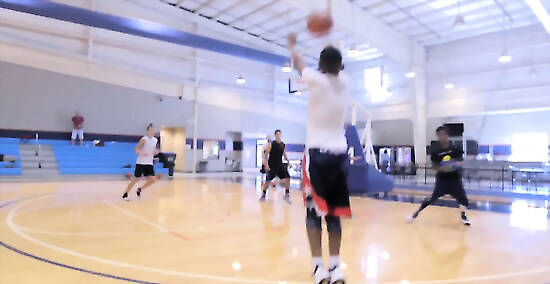
Develop creative plays that utilize your team's strengths. The goal of a play should be to break through the defense and get the ball to an open player for a shot. Give basic pick patterns names and let the point guard run them on offense. Practice these with cones for defenders and get your timing down. The most basic play is for one of the forwards to come out and set a pick for a guard. The guard then drives to the inside lane and kicks it back to the forward, who should be either open, or matched with the (probably) shorter defender originally guarding the guard.
How to Develop Mental and Physical Stamina
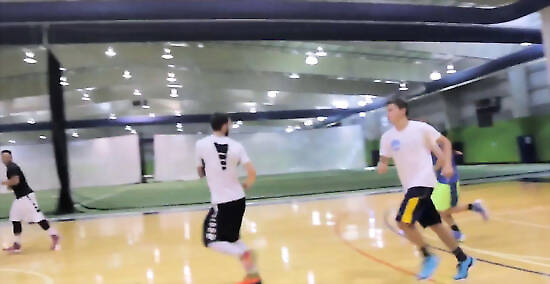
Run regularly. A full-court game of basketball includes a lot of running. Players not accustomed to the running will become winded very quickly. You don't even have to be the best defender or shooter if you can outlast your opponents on the court. Here are some running drills to work on and get your stamina up: Superman Drill. On a court, start on one baseline and run to the nearest free-throw line. Drop and do 5 push ups on your fingertips, then stand and run back to the original baseline, then run to the three-point line, drop and do 10 push ups and continue on that same idea for every line on the court, back and forth, until you reach the first line again. Shoot at least 10 free throws after the drill while you are tired. "Kill Drill": this is a full court, down and back timed drill. If you're really out of shape just start with maybe 4-6 "down and backs" in 1 minute 8 seconds (starting at 1 baseline running to the other and returning to the original). Sounds like a sufficient amount of time until you run the 160 feet (48.8 m). After you build up some stamina, try 13 down and backs in 68 seconds. Again, shoot at least 10 free throws while fatigued.
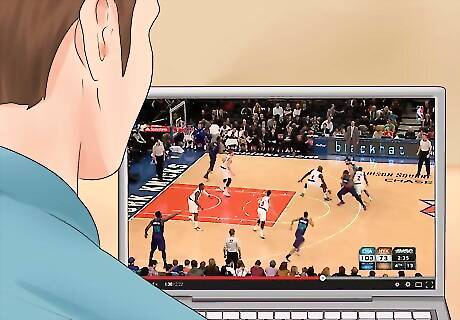
Learn everything you can about the game. Playing smart is just as important as playing well. Official NBA rules are available for free online, so it helps to brush up on them before playing the game. You may find something clarified that you’d misunderstood. Talk to other players, check websites, ask coaches for their tips. Knowing the historical rules also helps too. Watch old games, watch streetball games, read about the invention of basketball.
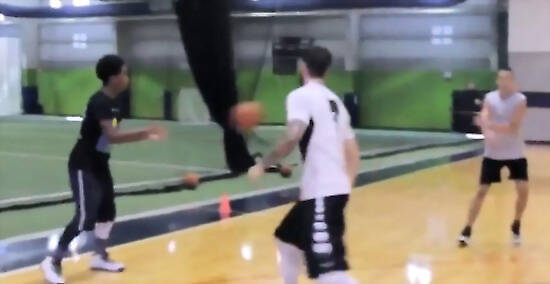
Always be a team player. Look for the open player and pass the ball. Don't hog the ball when you've got it and try to take low-probability shots that waste your team's chance at points.
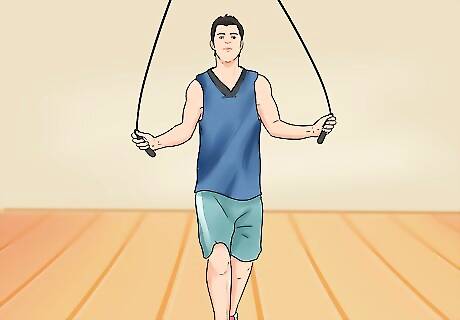
Increase your vertical leap. If you're fast, and agile, and can jump, you can get rebounds even over a taller player. Most super tall guys don't put all their effort into rebounds since they don't have to. You can beat them if you work at it. Try jump rope. Jump rope as fast, long, and hard as you can. The better you can do this, the faster footwork you can have on the court.
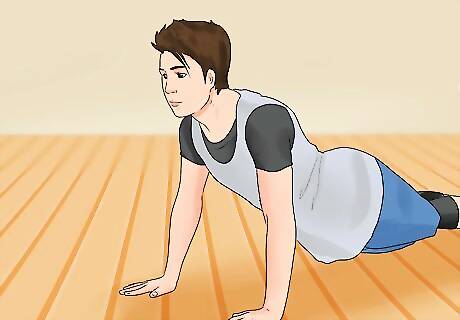
Do lots of push-ups, specifically fingertip push-ups. You will be amazed at how much better you can palm the ball if you have strong fingers. Even if you think you don't have large enough hands to palm the ball, it can be done if you have stronger fingers.
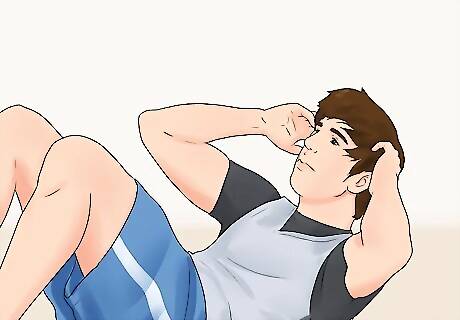
Work on your core strength. abdominal crunches, leg lifts, plank, and lower back extensions. If you have a strong core you will be able to take a hit and still finish strong at the rim.




















Comments
0 comment